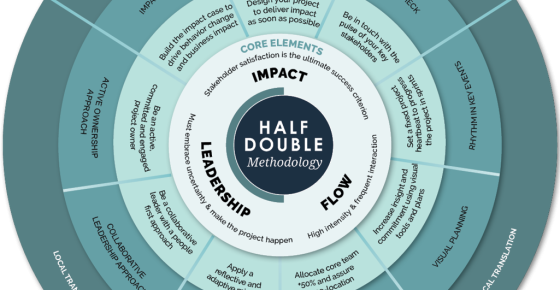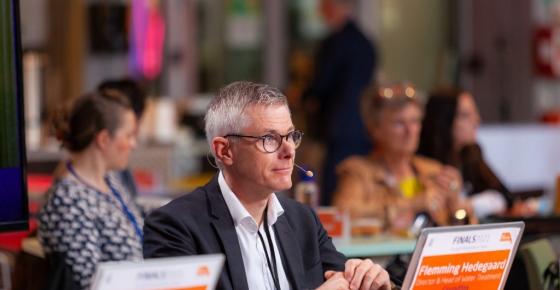What was your role in the development of the Half Double methodology?
I joined from the beginning, initially participating in four morning sessions that later evolved into a longer process with workshops, inspiring speakers, and collaborative development of both the methodology and its growing network.
You were part of the Half Double journey from early on – what do you particularly remember from that time?
It was an exciting initiative where you met like-minded people from other industries – people passionate about project management and performing at a high, operational level in their daily work.
What made the idea of developing a new project model attractive and exciting to you?
Hearing about others’ experiences and perspectives on the real challenges faced by project managers on large, demanding projects – where the path forward isn’t always clear.
And also, being part of “Sparring Sessions,” where we took the pulse of each other’s projects in a trusted environment. These sessions helped identify areas where action was needed to create results.
What have you taken with you from Half Double that you still use today?
That project management has many facets. You need to constantly keep your finger on the pulse and take action not just where it’s needed – but early, and as foresightedly as possible.
Can you recall a moment when you thought: “This really works”?
I particularly remember that, early in the process, there was strong consensus around the 10 guiding stars – which later became the foundation for the three core elements of the Half Double methodology: Impact, Leadership, and Flow.




